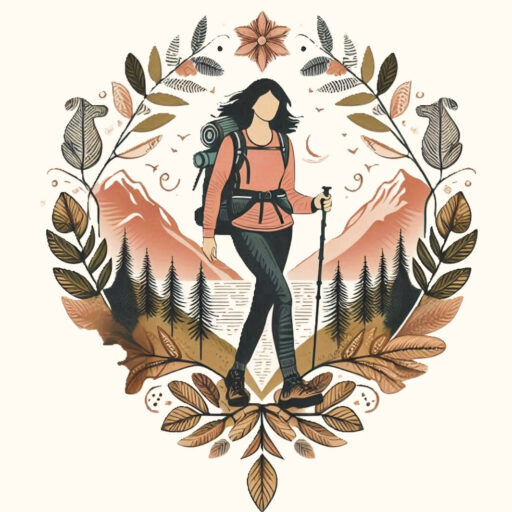Overcoming Fears On The Trail
Fear on the trail is something every hiker encounters at some point. But what exactly triggers this unsettling anxiety? Most of it comes down to the unpredictability of nature. The dark whispers of the forest, unfamiliar sounds echoing through the trees, and even the mere thought of encountering wild animals can stir up unease.
Our minds have a funny way of amplifying the unknown. It’s not just the physical aspect of hiking that grips us, it’s the mental leaps we take too. Imagining worst-case scenarios or getting lost can make even the most seasoned hikers pause. Recognizing that our brains are playing these tricks is the first step in facing them down.
Acknowledging fear isn’t admitting defeat; it’s actually the first move in overcoming it. When you say to yourself, ‘Hey, I’m a bit anxious about this,’ you create an opportunity for growth. Facing fear head-on transforms it into action, whether that’s learning new skills or adopting confidence-boosting routines.
It’s helpful to hear real stories from fellow hikers who’ve battled the same fears. Maybe it’s the jitters from crossing that first suspension bridge or that time they heard a rustle in the leaves at dusk. These shared experiences remind us we’re not alone and offer us strategies to move past our hangups. Knowing others have faced and overcome similar challenges is reassuring, like having a buddy on the trail with their own tale to tell.
Preparing Physically: Building Confidence Through Fitness
Getting ready physically for the trail goes a long way in easing those nagging worries. When your legs are strong, and your endurance is up, every path seems just a little bit more achievable. Regular workouts help, think strength training to tackle uphill climbs and cardio to keep you moving at a steady pace. I love my Garmin to help me with my training.
You don’t have to be a marathon runner to enjoy a trek, but building up your stamina with consistent exercise can transform trail anxieties into excitement for the adventure. Focus on exercises that mimic hiking movements. Lunges and squats can be your best friends — they build those leg muscles you’ll rely on when the trail gets tough.
Don’t forget to add variety to your routine too. Incorporate flexibility and balance exercises like yoga or tai chi. These aren’t just good for recovery, they help you step safely, so you’re less likely to stumble over rocks or uneven ground.
Keeping active between hikes means less time worrying about what your body can handle. It’s all about preparation. And whether it’s your first trail ever or just the first one this season, a little bit of gym time can make you feel a lot more at ease. Those butterflies in your stomach? They’re just excitement waiting for a chance to take off.
Packing for Peace of Mind: Essential Gear and Supplies
Hitting the trail well-prepared can turn nerves into pure confidence. Start with a solid first aid kit. Keep it simple but effective. Band-aids for blisters, antiseptic wipes, and maybe a sprain-ready splint or two. Knowing you can handle small injuries takes a load off your mind.
Think of food and water as your power-ups. Pack enough to cover the whole hike, plus a little extra for those “just in case” moments. Lightweight snacks like nuts or energy bars work wonders to keep you going.
When it comes to safety, don’t skimp. Bear spray or a loud whistle can serve as essential companions against unwanted attention, whether from wildlife or anything else. Knowing you’ve got backup makes tackling unfamiliar trails a lot less intimidating.
A good meal the night before your hike sets the stage for a smoother adventure. Think balanced – carbs, proteins, and fats – to keep you fueled and ready. It’s like giving your engine the best start you can offer.
Having your supplies sorted not only helps you tackle fear but also lets you savor the adventure more. With your essentials secured, you can focus on the journey itself and the amazing world around you.
Mental Strategies: Tackling Trail Anxiety
Confidence on the trail isn’t just about what’s in your pack or your physical ability. Your mindset plays a major role too. Visualization techniques can be game-changers. Picture yourself walking confidently, hear the crunch of the leaves underfoot, and feel the steady rhythm of your breathing. Getting your mind to see the success can often translate into reality.
Mindfulness is another effective tool. Stay grounded in the moment by focusing on the immediate environment around you. Notice the textures, the smells, and the colors. This keeps thoughts of what could go wrong at bay and lets you enjoy the now.
Having a mental checklist for emergencies can provide peace. Knowing that you have a plan for unexpected situations empowers you rather than letting worries take charge.
There’s also strength in numbers. Hiking with a partner makes adventures feel safer and more enjoyable. You’ve got someone to share the experience with and to lend a hand if needed.
Turning fear into excitement isn’t just for seasoned hikers. I’ve heard of those who were once apprehensive turning moments of worry into stories of triumph. Everyone can harness these mental strategies to keep calm and carry on with confidence.


Leave a Reply